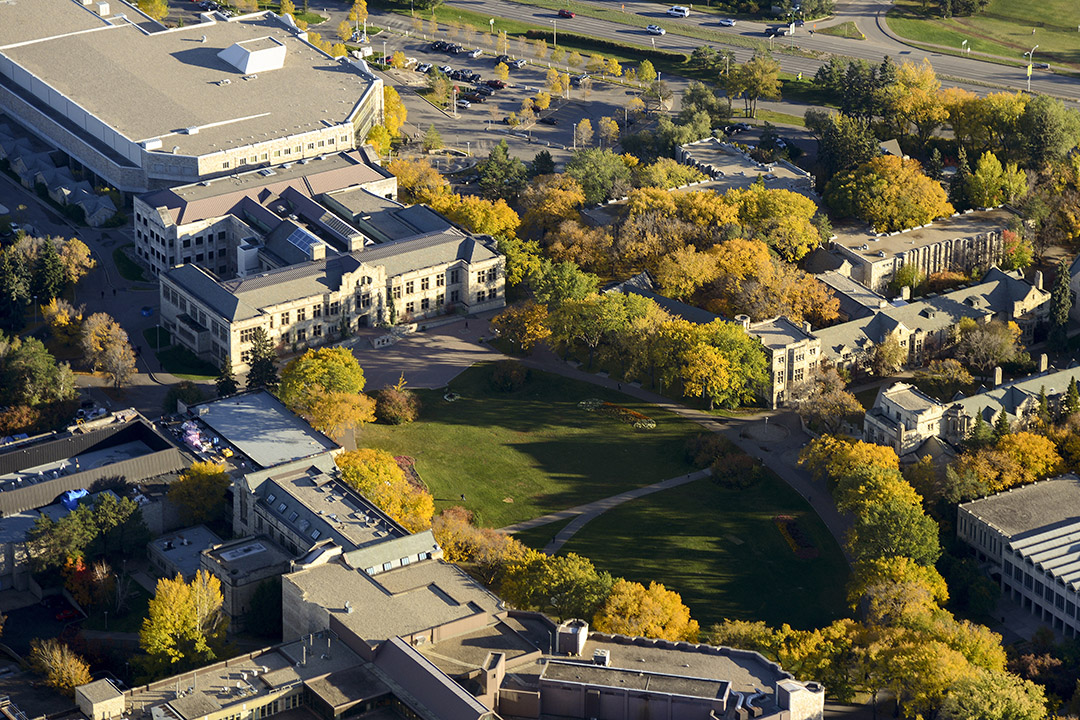
Signature areas of research help USask highlight its strengths
The university has provided $360,000 to nine teams to assist in developing and showcasing innovative interdisciplinary research, scholarly, and artistic work
By Shannon BoklaschukThe nine signature areas of research at the University of Saskatchewan (USask) represent the institution’s unique strengths as well as its commitments to interdisciplinary innovation and collaboration.
As part of the signature areas renewal process, USask has provided $360,000—which is $40,000 for each signature area team—to resource a variety of activities, such as potential meetings, seminars, and symposia, that will help to inform and engage the community as the teams’ work takes shape.
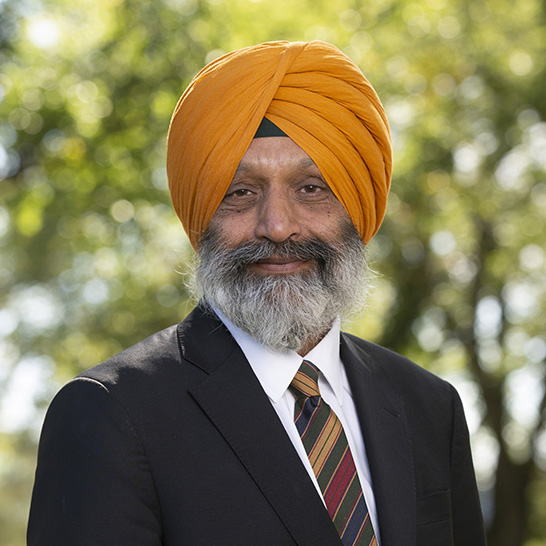
“How the money will be used is up to the signature areas scholars themselves,” said Dr. Baljit Singh (PhD), USask’s vice-president research, who noted that each signature area will have its own leadership structure.
“We are asking the signature areas leaders to envision how they will be telling the community—within and outside the university—what their signature areas are doing,” he said.
Earlier this year, three new signature areas of research were announced—Communities and Sustainability, Health and Wellness, and Quantum Innovation—following a collaborative process that included input from hundreds of members of the USask community. These new signature areas were added to USask’s existing six signature areas—Agriculture, Energy and Mineral Resources, Indigenous Peoples, Synchrotron Sciences, One Health, and Water Security—that were selected a decade ago through a campus-wide consultation process.
Of the six existing signature areas, two signature areas—Energy and Mineral Resources and Water Security—were selected to undergo a refresh process. They are now named Water: Health, Equity, Access, Security and Sustainability of our Planet’s Fresh Water Resources, and Energy and Mineral Resources for a Sustainable Future. The other four areas will be reviewed in 2024.
Singh said USask has developed its nine signature areas to “put a sharper focus on some of the areas of existing and emerging strengths” that can be found in the research, scholarly, and artistic work taking place across the university.
“Our signature areas have allowed us to engage with members of the campus community in a deeper way, to understand what’s on their minds and where they see the university’s research, scholarly, and artistic work going in the next five to 10 years,” he said.
“This was a very democratic process because everybody had a chance to present their idea. We also put steps in place where researchers were able to discuss the ideas with each other and combine their ideas to create a bigger and better signature area,” Singh added.
“Going forward, we are hoping that the leaders will create platforms for interdisciplinary work in these signature areas to create better learning opportunities for students and more robust engagement outside of the university as well.”
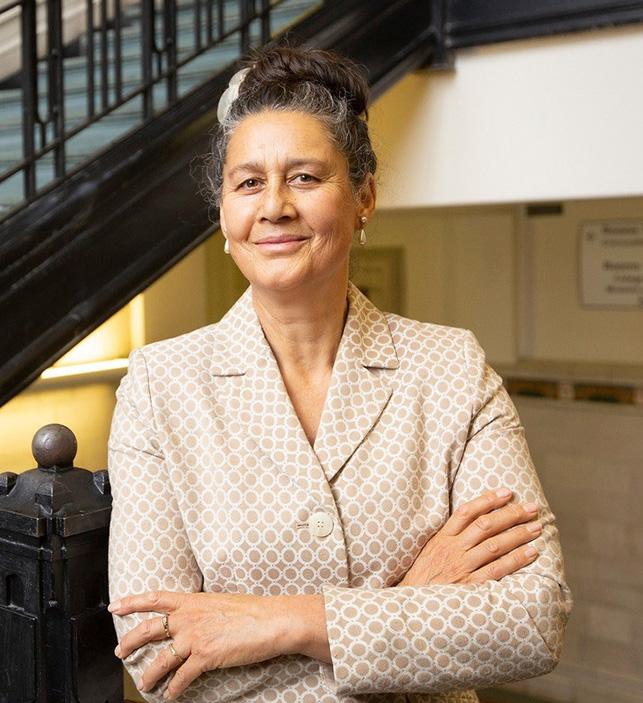
USask Provost and Vice-President Academic Dr. Airini (PhD), who co-led the signature areas renewal process in 2021 with Singh, said the goal was to build community, elevate excellence, generate discussion, and inform future directions in each of the university’s signature areas.
“We are grateful to everyone who participated in the signature areas renewals process and invested their time and energy in these important conversations,” she said. “Our signature areas have a key role to play in our bold ambition to be the university the world needs.”
The Office of the Provost and Vice-President Academic and the Office of the Vice-President Research are now collaborating on a process to identify and connect signature pedagogies with the signature areas of research, to enhance the research, teaching, and learning activity on campus. USask has many opportunities to learn about the context and possibilities being investigated through the signature research areas. In addition, work is underway to expand industry and skill-based studies. For example, microcredentials could be offered in a signature area, or students could work on capstone projects in a signature area. Identifying signature pedagogies at the university will also assist students in finding interdisciplinary groups of scholars with whom they would like to study and work.
“Teaching, learning, and research are inextricably linked at the university,” said Airini. “We see the development of signature pedagogies as the next step in showcasing our interdisciplinary collaboration, innovation, and expertise to the world.”
The leaders of the three new signature areas are looking forward to enhancing the research, scholarly, and artistic work, as well as the teaching and learning activity, connected to their interdisciplinary collaborations.
Quantum Innovation
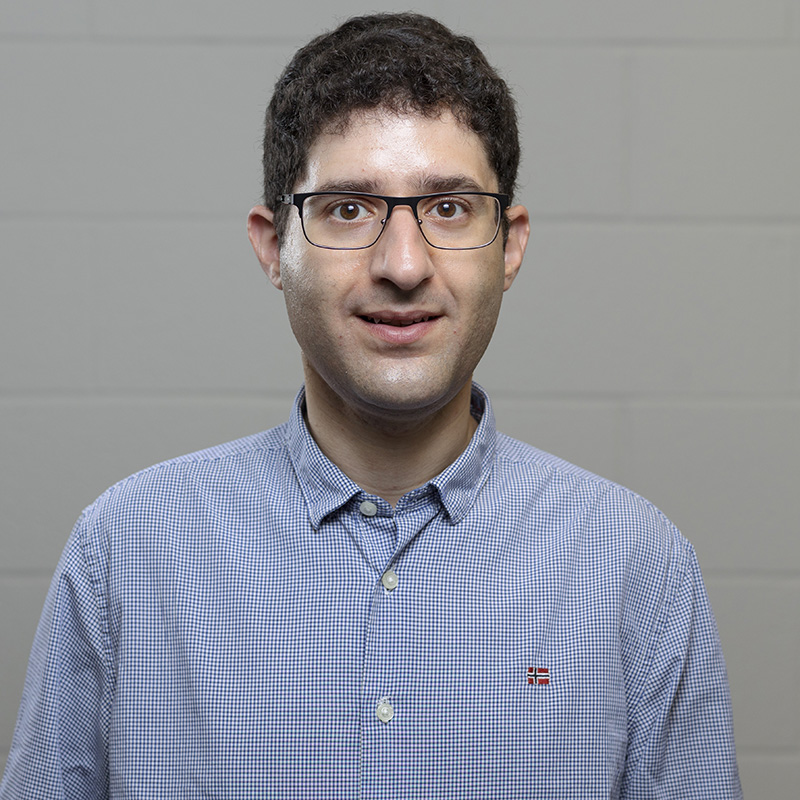
Dr. Steven Rayan (PhD), who leads Quantum Innovation, said its selection as a signature area recognizes nearly 90 years of quantum science and quantum thinking at USask—a legacy that includes the groundbreaking work of Dr. Gerhard Herzberg from 1935 to 1945, and his Nobel Prize in Chemistry 1971. At the same time, the selection of this new signature area recognizes that faculty, postdoctoral fellows, students, and other stakeholders working in the quantum sphere at USask are pioneering exciting developments in quantum technologies and some of the most promising quantum solutions to global problems, he said.
“The naming of Quantum Innovation as a signature area of research comes at the right time as universities, governments, and corporations around the world mobilize to prioritize quantum research and development,” said Rayan, a faculty member in the Department of Mathematics and Statistics in the College of Arts and Science and the director of the Centre for Quantum Topology and Its Applications (quanTA).
“Canada, in particular, had announced its sweeping National Quantum Strategy in 2021, with the first major initiatives and funding exercises coming to fruition this year. The announcement of the signature area aligns the University of Saskatchewan perfectly with this national priority and sends a clear message that USask is the right place in which to invest this funding.”
Rayan said the future is bright for Quantum Innovation at USask, noting the coalescence of the signature area has aligned crucial research pathways at the university. Through these, Rayan expects to see several groundbreaking quantum-fueled, USask-designed technologies come to fruition in the next two to three years. The technologies will have considerable applications in computing, advanced manufacturing, health care, and environmental monitoring and assessment, Rayan said.
“At the same time, we will be launching exciting research programs investigating quantum approaches to data security and digital currencies, to name just a couple of emerging areas. A core part of our vision is to anticipate the social and economic impact of these technologies before they are used, and to engage the public in their design, so that quantum innovations do not create new problems in the process of solving existing ones,” he said.
“As such, the work of Quantum Innovation relies on USask’s full spectrum of scholarly and artistic thinking and talent, as well as the interest and expertise of the wider community around us. The complete integration of science, design, understanding, and assessment that we are attempting is only possible at this institution, where interdisciplinarity is at the very core of our academic culture and manifests in everything we do.”
Communities and Sustainability
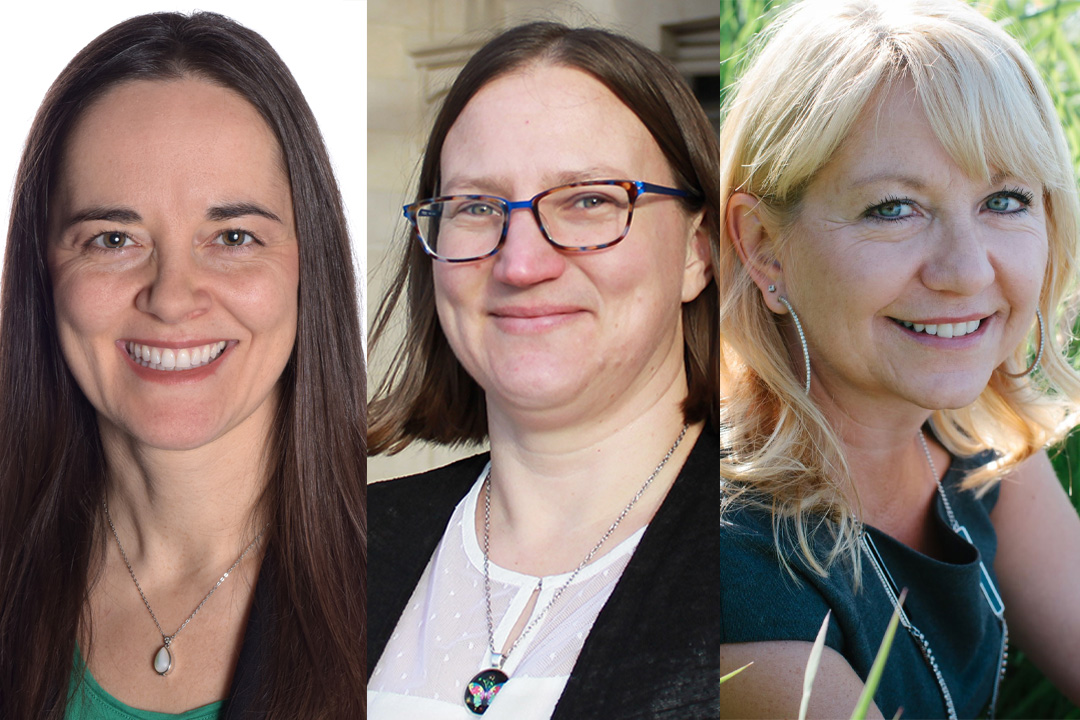
Interdisciplinarity is also key to the new Communities and Sustainability signature area of research. The signature area working group has adopted a governance model that will eventually include a community-based advisory council and a collaborative leadership structure. The current co-operative leadership structure is distributed among three people: Dr. Dionne Pohler (PhD), an associate professor in the Edwards School of Business and the Co-operative Retailing System Chair in Co-operative Governance at the Canadian Centre for the Study of Co-operatives; Dr. Vicki Squires (PhD), associate dean, research, graduate support and international Initiatives in the College of Education and an associate professor in the Department of Educational Administration in the College of Education; and Dr. Lori Bradford (PhD), Canada Research Chair Tier 2 in Incorporating Social and Cultural Sciences into Engineering Design and an assistant professor in the Ron and Jane Graham School of Professional Development in the College of Engineering and in the School of Environment and Sustainability.
The Communities and Sustainability signature area will focus on the interrelatedness of human communities and natural ecologies. It will also involve understanding the relationships among different peoples and the natural world and ensuring they are maintained in a good way—a philosophy embodied in the Cree/Saulteaux concept of wahkohtowin—to overcome urgent environmental, social, and political challenges.
Pohler said the Communities and Sustainability working group wants the signature area “to provide a hub to connect people who are doing research that focuses on developing relationships and contributes to the flourishing of our natural and social environments.”
“Lots of people at the university are already doing this work in collaboration with non-academic partners. Our goals are to make this work more visible, develop appropriate ways of measuring our impact, and continue building relationships within and outside the university to support research that has a positive effect on our communities,” Pohler said.
“We would also like to create a home for those outside the university—our community partners—to become excited about engaging in the research mission of the university,” she added.
Communities and Sustainability resulted from the merger of two initially separate pitches for a new signature area of research.
“The pitch involved over six different units across campus, and received support from faculty, staff, and community partners. Since our successful pitch, we have grown even more and formed a working group to develop our vision and a unique collaborative governance and leadership model,” said Pohler.
“We believe this new signature area has incredible potential to connect many researchers across campus whose research questions and methods are often developed in collaboration with community and non-academic partners, and to remove barriers within the university for others to undertake this type of research.”
Health and Wellness
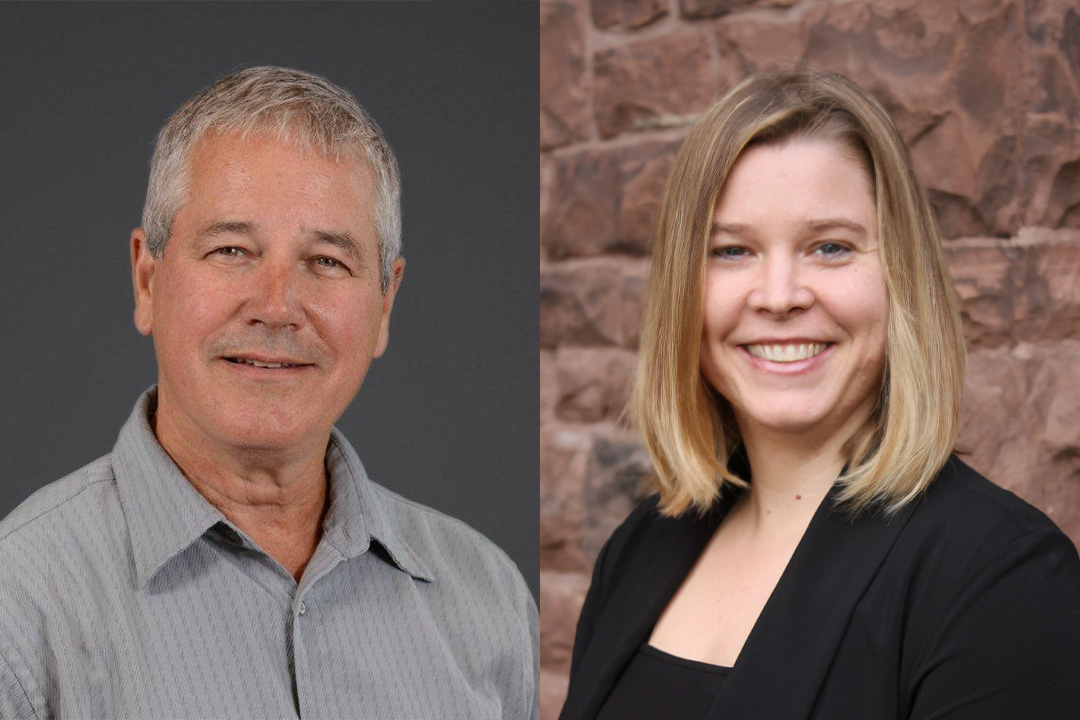
Like Quantum Innovation and Communities and Sustainability, the Health and Wellness signature area of research is also interdisciplinary in nature. It has brought together five distinct concepts—the pillar leads and affiliates of the Origins of Health and Disease; Population and Public Health; Music, Arts, and Wellbeing; Climate Change; and Population Demographics proposals—and is now co-led by Dr. Jennifer Lang (PhD), a faculty member in the Department of Music in the College of Arts and Science, and Dr. John Gordon (PhD), a faculty member in the College of Medicine.
Researchers from numerous USask colleges and departments see the Health and Wellness signature area as “a window of opportunity” in which their work is reflected, and they also envision themselves and their work as part of this critical field of study, said Lang and Gordon.
“Health and Wellness is a natural and welcoming home and a collaborative gathering place for our arts scholars, population health, public health, biomedical, clinical, Indigenous, social, and political science researchers at levels not seen previously at our institution,” said Lang.
The Health and Wellness signature area is a collaboration between scholars from multiple disciplines who have varied perspectives but who share a common passion for health and wellness as it relates to individuals, communities, and the Earth. The signature area also aligns with national and global priorities on health inequalities, focusing its formidable and expanding research expertise on these long-standing issues and on preparedness for pandemic emergencies, such as the current global COVID-19 pandemic, said Lang and Gordon.
“This signature area has the potential to explore initiatives at the community level in addition to powerful overarching research that will impact our pedagogical and clinical practices moving forward,” Gordon said.
Lang and Gordon said the Health and Wellness team sees itself as a collective in its efforts to critically investigate matters related to health and wellness. The researchers also see great potential in the ways the new signature area can complement and partner with the eight other signature areas, as well as with departments, colleges, schools, and centres on campus and beyond.
“We will collectively focus our energy on real-world, pressing problems that need to be answered, rather than focusing on work solely within our separate disciplines,” Lang said.
Visit USask’s research website to learn more about all nine signature areas of research and the research expertise at the university.
Article re-posted on .
View original article.
